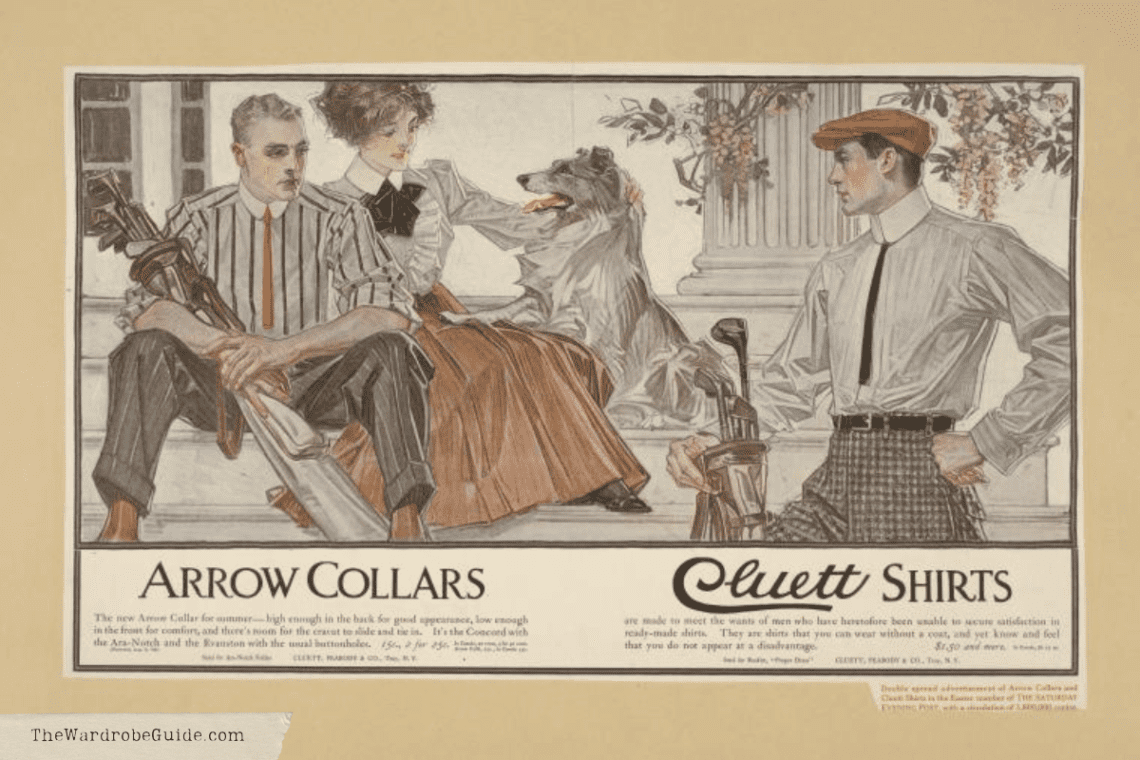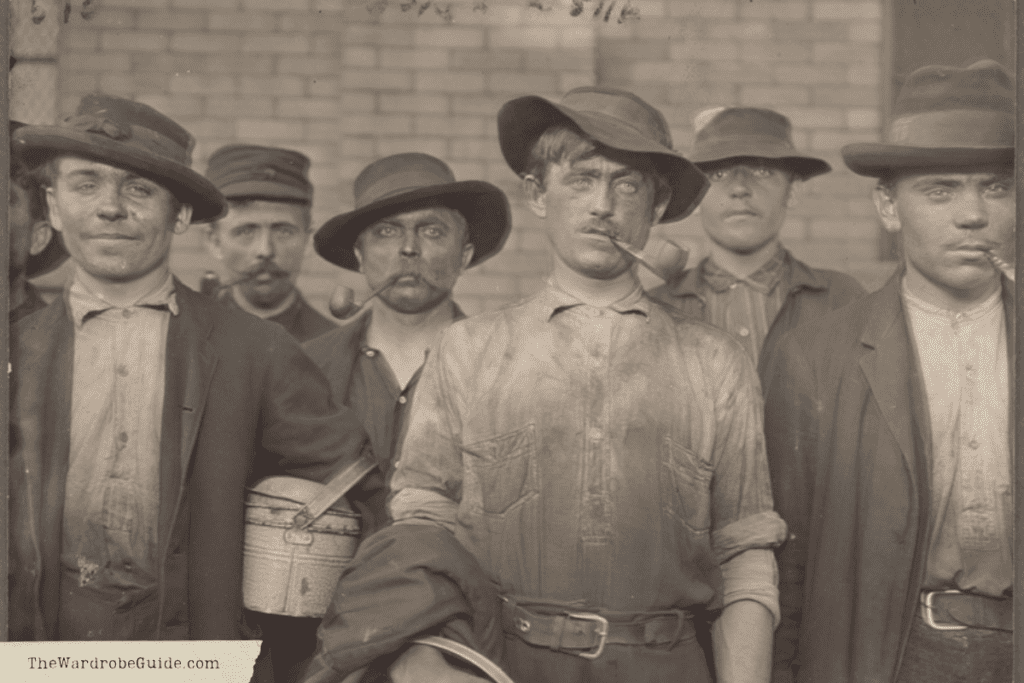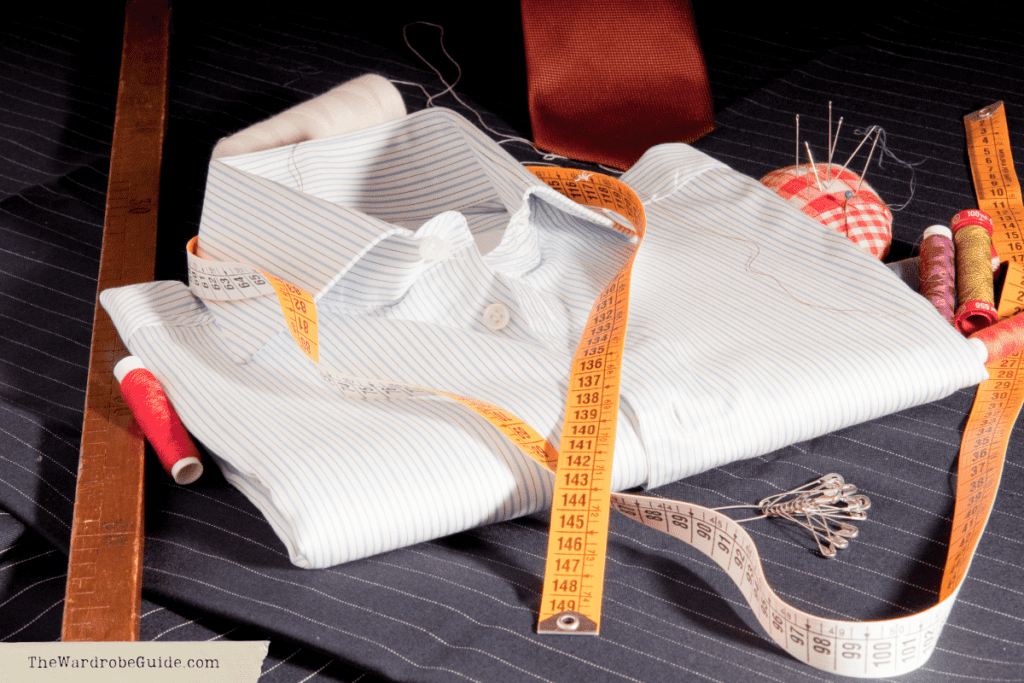
This is a continuation of our earlier article about the anatomy of a dress shirt. After all of our research, we felt that we could write an entire article just about the history and fit of dress shirts. This article is less based on wardrobe knowledge, and more in the costume design world. We felt it was relevant and exciting all the same.
This post may contain affiliate links. We only recommend products we have tried and tested ourselves. If you use these links to purchase something, we may earn a small commission at no additional cost to you. These links help us cover the running costs of The Wardrobe Guide! Read our full disclaimer here.
What Makes a Shirt a Dress Shirt?
A dress shirt is any shirt that has a collar around the neck and a full-length front placket. The front placket should close via buttons or studs.
Types of Dress Shirts
Off The Rack
An off-the-rack dress shirt is a shirt that you can go buy to wear immediately. It is the least expensive option when buying a dress shirt. You may buy off-the-rack according to one or two measurements. Typically, your neck measurement will be used, and then possibly the sleeve measurement.
Because off-the-rack clothing is cut to fit a wide range of body types, you might find the garment fits less-than-perfectly in one or more places. You can get off-the-rack clothing tailored, which will help with some of the fit issues, but it will never fit the way a bespoke shirt would.
Relating to theatre, an off-the-rack shirt might be one that the designer orders from ASOS or shops from Macy’s.
Made-To-Measure
A made-to-measure shirt is more custom and more expensive than an off-the-rack shirt. The maker might ask for a hand full of measurements from you when you order your shirt. You might also get the option to customize certain parts of the shirt, such as fabric, color, stitching, and other details. After receiving your order, a made-to-measure company will take your preferences and the measurements you gave them, and apply these details to an already-existing pattern.
Relating back to theatre, this could be taking an actor’s measurements on the first day of rehearsal, then using a Butterick pattern and the fabric you found on fabric.com to create a shirt that will fit your actor.
Bespoke
A bespoke shirt is the most expensive option. With a bespoke creation, you will go into a tailor’s shop and have many measurements taken by the tailor themself. They will also take into account your body type and posture. You will have similar amounts of fabric/detail decisions as you would with a made-to-measure creation. However, with a bespoke shirt, the tailor creates a brand-new pattern specifically for you. If you order a bespoke shirt, you will most likely go in for multiple fittings during the process of the build, so things can be tweaked and altered if needed before the shirt is finished.
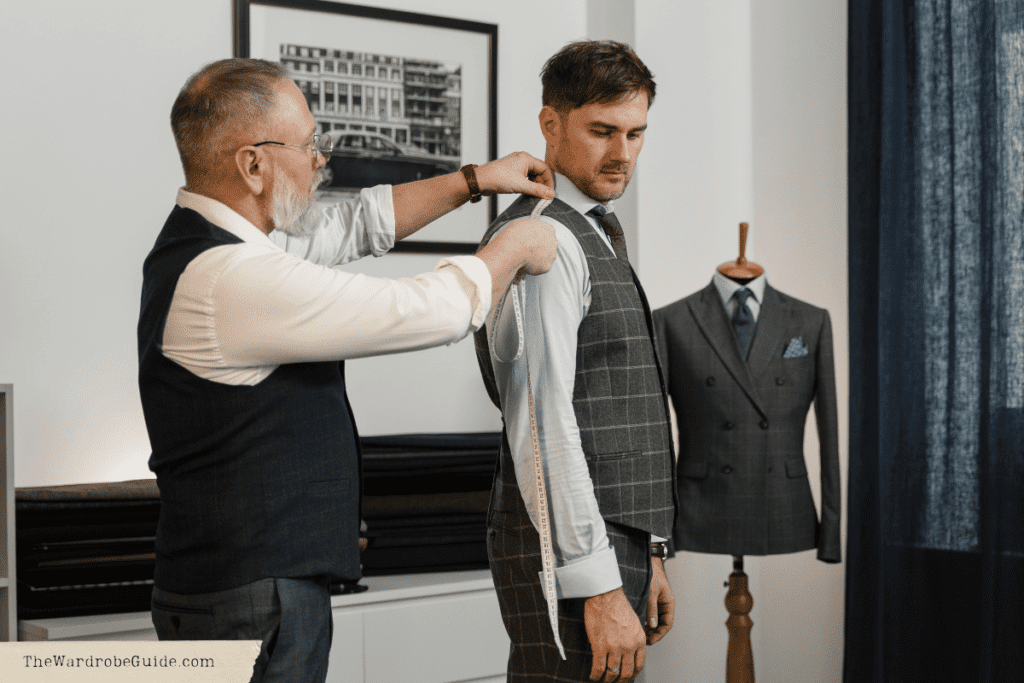
In theatre, an example of a bespoke shirt is having a shirt made for your show by Cego in NYC.
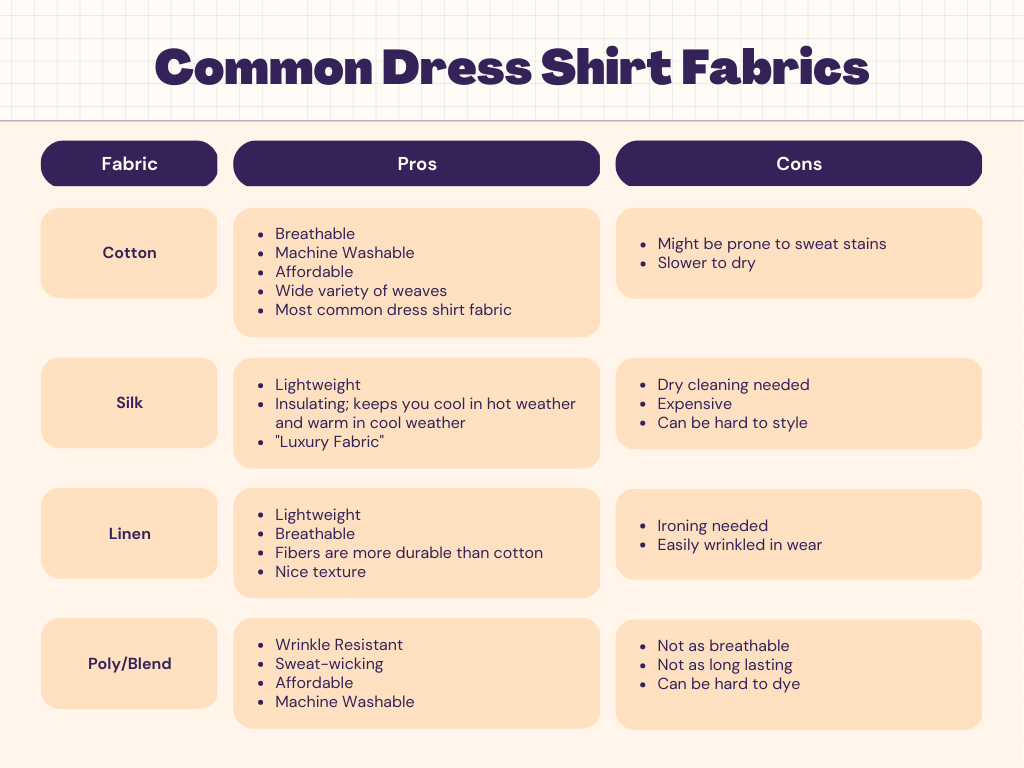
Dress Shirt Fit
- In the US, the off-the-rack shirt sizes will typically be displayed in one or two numbers. The first number will most likely be somewhere from 14-18”. This number is referring to one’s neck measurement; or, the circumference around one’s neck. If there is a second number, that is typically the sleeve measurement. This measurement is taken starting from the base of the neck, measuring out toward the shoulder, then down the arm to the wrist. (This measurement is typically somewhere in the mid-30s).
- On a modern-day dress shirt, the sleeve seam should hit close to the top of the shoulders. The cuff should then hit right at the base of the thumb for a perfect fit.
- If a shirt is a correct size in the chest and waist, the front buttons will lay smoothly. If a shirt is too tight, the buttons will pull or bubble while you stand still with your arms down.

- If a dress shirt is the correct length, the shirt will fall just past the back pockets of the dress pants when worn buttoned and untucked.
- If the neck is the right size, when buttoned all the way up, there should still be enough room in the neck for you to stick only two fingers in the collar hole comfortably. If you can’t fit two fingers into your collar, the shirt is too tight.
While these days, any dress shirt can be worn by any gender, traditionally, you can tell if a shirt is built for a male-presenting or female-presenting person by the way the front placket overlaps. If the shirt is cut for a man, the placket will have the buttons on the right side, with the left side overlapping. If it is cut for a woman, the buttons will be on the left with the right side overlapping
A Brief History of the Dress Shirt
Dress shirts started appearing as early as the 18th century in Europe. Originally, their purpose was much like an undershirt would be used today. They were used to protect fancier (handmade) waistcoats and jackets from sweat, odor, oil, and anything else on irregularly bathed skin.
In the 19th century, dress shirts started being seen as a status symbol. Only well-off men could afford what was needed to keep a white shirt clean. Also, a starched collar and cuffs showed that a man most likely worked at a job where they did not have to move much.
Detachable collars were invented in NYC. This invention was seen as a way to make dress shirts more affordable. One could simply remove the collar (most likely the grimiest part of the shirt) and launder it separately. This made the dress shirt attainable to more people.
After World War 1, the dress shirt changed a bit more. Until then, the dress shirt’s buttons ended about halfway down the shirt. In the mid-1910s, we see the full-front placket rise in popularity. By the 1930s, the removable collar fell in popularity, and we started seeing the dress shirt structure we know today. In 1953, wrinkle-free shirts were invented.
Finally, in 1960, we saw chest pockets on dress shirts become popular. This is because fewer men were wearing vests.
DO YOU KNOW What makes wrinkle-free shirts wrinkle free?
They are treated with a resin that releases formaldehyde. Different brands of wrinkle-free shirts have different levels of formaldehyde. The international textile standard’s recommended level of formaldehyde in an article of clothing is 75ppm.
Blue Collar vs. White Collar
You might’ve heard the terms “blue collar” and “white collar” used even in the present day when discussing class. These days, the terms are largely metaphorical. However, decades ago, it refered to the color of dress shirts certain workers might generally be seen in.
As we discussed earlier, white dress shirts were seen as a symbol of status in the early 20th century because they showed that you were working a job where you didn’t run the risk of ruining your white shirt, getting it dirty or sweaty. A job like this would probably be a managerial job that sat at a desk all day.
Blue collar, on the other hand, refers to the denim or chambray shirts that tradesmen often wore. These shirts were cheaper, more durable, and hid stains well.
Interesting Facts
Historically, an abundance of fabric has been a signal of wealth and prosperity. If there is a time period where society is booming (think Post WW2 America, or the Roaring 20’s), that will often be reflected by fuller clothing– more pleats, more embellishment, more fabric. The opposite can be said for times of hardship (IE The Great Depression). In periods like this, the clothing will be plainer.
Take, for instance, a french cuff. We often associate that specific style with upper-class, or formal occasions. This style of cuff uses twice the amount of fabric as a common cuff and has twice as many button holes. Historically, when shirts were made by a tailor, these excess materials would signal to others that one could afford to spend money on more fabric than necessary for their cuffs.
For More Information
Lastly, if you want to read more about men’s fashion, check out either of these amazing resources.
- Dressing The Man: Mastering the Art of Permanent Fashion. By: Alan Flusser
- Fashion: The New Edition, The Definitive Visual Guide. By: DK (Smithsonian Institution)
Tell us what you think! Did you learn anything new from this article? Would you like to see more articles like this in the future from The Wardrobe Guide? Let us know in the comments!




